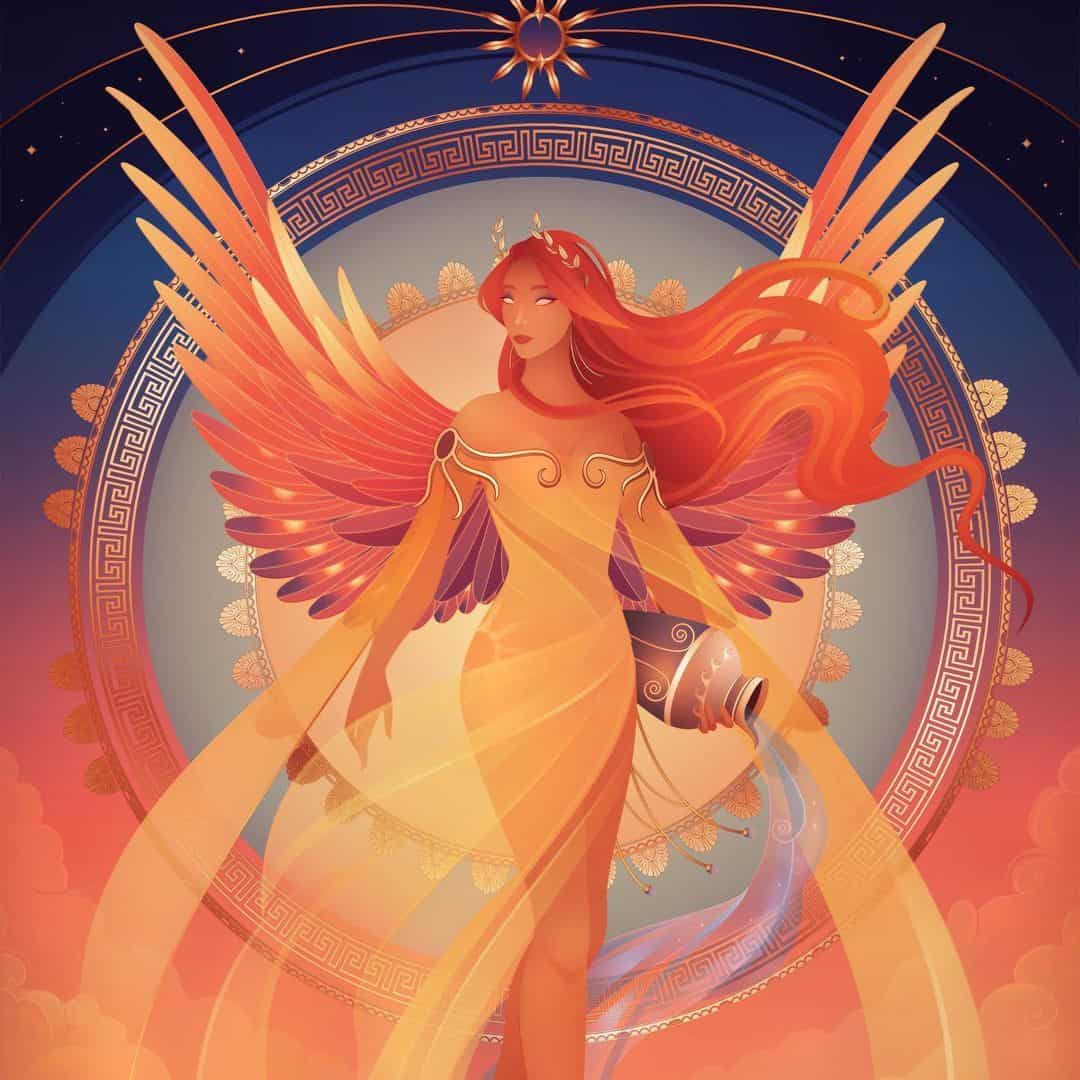EOS is the Greek Goddess of the Dawn. She is the daughter of Hyperion and Theia and is known for her beauty and grace. In Greek mythology, EOS is often depicted as a young woman with rosy fingers and a saffron-colored robe, holding a torch to light the way for the sun.
EOS is also associated with love and passion, as she is said to have fallen in love with mortals and immortals. One of her most famous lovers was Tithonus, a mortal prince she abducted and made immortal. However, she forgot to ask for eternal youth for him, and he withered away with age, becoming a cricket.
In literature, EOS has been a popular subject for poets throughout history. Her beauty and grace have inspired countless works of art, and her role as the bringer of light has made her an important symbol of hope and renewal. Despite being a relatively minor figure in Greek mythology, EOS has remained an enduring and beloved character, inspiring generations of artists and writers to explore the themes of love, beauty, and the power of the dawn.
Her Birth Story
According to Greek mythology, EOS was the goddess of the dawn and the daughter of Hyperion and Theia. She was also the sister of Helios, the sun god, and Selene, the moon goddess.
EOS was known for her beauty and was often depicted as a young woman with rosy fingers. She was also associated with the morning star, sometimes referred to as Eosphorus.
One of the most famous stories about EOS is her abduction of Tithonus, a mortal prince. She fell in love with him and asked Zeus to grant him immortality. However, she forgot to ask for eternal youth, and Tithonus eventually grew old and frail, unable to die.
Another story about EOS involves her affair with Ares, the god of war. She had several children with him, including Harmonia, the goddess of harmony.
In art, EOS was often depicted riding a chariot across the sky, bringing the dawn with her. She was also associated with the rooster, which crowed at dawn, and the saffron flower, which bloomed simultaneously.
Overall, EOS was a powerful and beautiful goddess representing the beginning of each new day. Her birth story and subsequent adventures were a testament to her strength and importance in Greek mythology.
Family
Relationships
In Greek mythology, EOS, also known as Aurora in Roman mythology, is the goddess of the dawn. She is the daughter of Hyperion, the Titan of light, and Theia, the Titaness of sight. She is also the sister of Helios, the sun god, and Selene, the goddess of the moon.
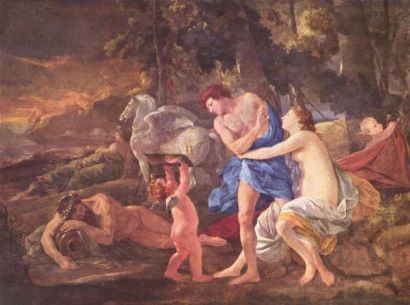
Husband and Affairs
According to mythology, EOS had many affairs with both mortals and gods. Her most famous affair was with Tithonus, a mortal prince of Troy. She fell in love with him and asked Zeus to grant him immortality, but she forgot to ask for eternal youth. As a result, Tithonus continued to age and eventually became so weak and frail that EOS turned him into a cicada.
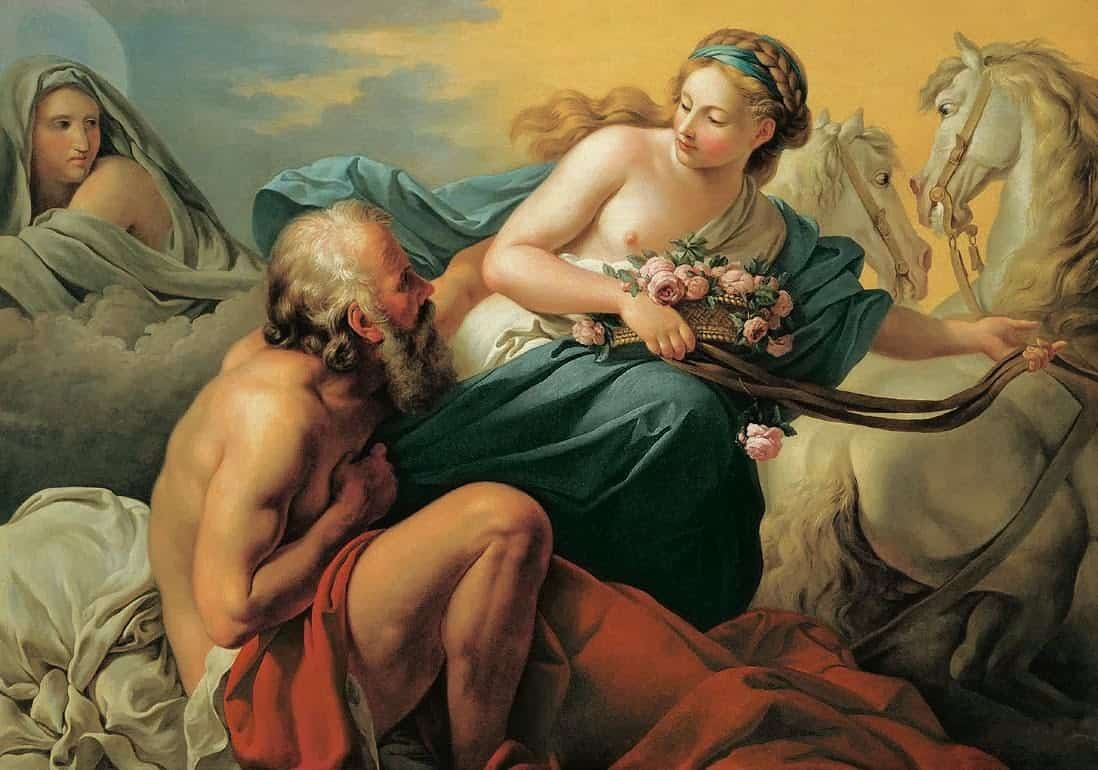
EOS also had affairs with Ares, the god of war, and Orion, a giant huntsman. She had four children with Ares: Phobos, Deimos, Harmonia, and Adrestia. With Orion, she had a son named Phaeton.
Children
EOS had several children with different partners. Her children include:
- Phobos: The god of fear and terror.
- Deimos: The god of dread and terror.
- Harmonia: The goddess of harmony and concord.
- Adrestia: The goddess of revolt and just retribution.
- Phaeton: The son of EOS and Orion. He was the driver of the sun chariot, but he lost control and caused great destruction on Earth.
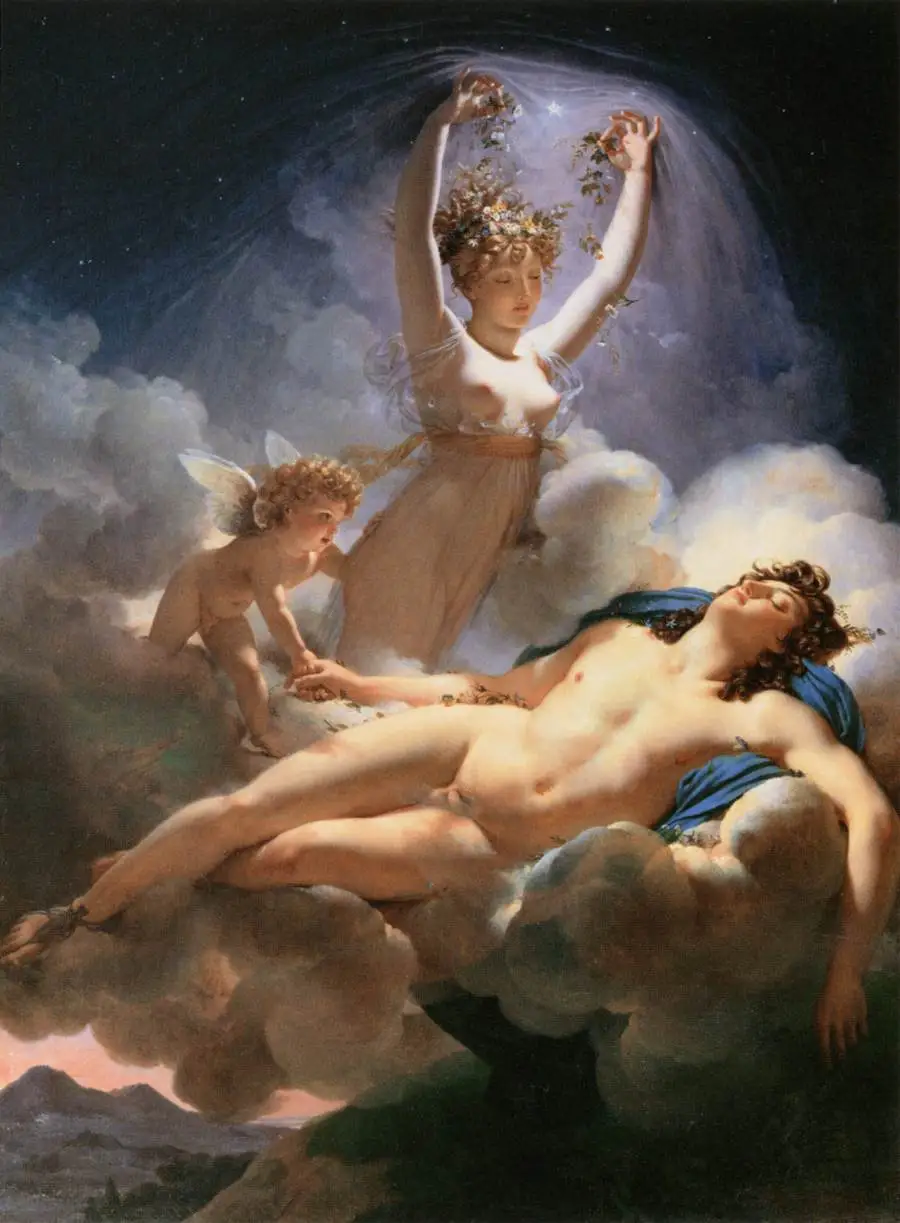
Overall, EOS had a complex family life with many affairs and children. Her relationships with mortals and gods were often tumultuous, leading to joy and sorrow.
Powers and Symbols
As the Greek Goddess of the Dawn, EOS was associated with the start of a new day and the coming of light. She was believed to have the power to bring light to the world and to awaken the sleeping earth. Her powers were closely linked to the natural cycle of sunrise and sunset, and she was often depicted holding a torch or a flame.
One of the most important symbols associated with EOS was the rosy-fingered dawn. This referenced the beautiful colors often appearing in the sky just before sunrise. In Greek mythology, EOS was said to open the gates of heaven each morning, allowing the sun to rise and illuminate the world.
Another important symbol associated with EOS was the chariot. According to legend, she rode a chariot across the sky each morning, bringing light to the world. The chariot was often depicted as being pulled by horses, also a symbol of the dawn.
In addition to her powers over light and the dawn, EOS was associated with love and fertility. She was often depicted as a beautiful woman and was said to have many lovers among the gods and mortals. Her children included the winds, the stars, and the morning dew.
Overall, EOS was a powerful and influential figure in Greek mythology, closely associated with the natural world and the cycle of the day. Her symbols and powers continue to be celebrated and honored by people worldwide today.
Worship
Eos, the Greek Goddess of the Dawn, was worshipped in ancient Greece as a powerful deity who brought light and new beginnings to each day. She was considered one of the twelve Olympian gods and goddesses, and her worship was essential to Greek religious life.
Eos was often depicted as a beautiful woman with rosy fingers who drove a chariot across the sky to bring the dawn. Her worship was associated with the start of each new day, and many Greeks would offer prayers and sacrifices to her in the morning.
Many temples and shrines were dedicated to Eos throughout Greece, and her worship was especially popular in Athens. Some of the most famous temples to Eos were located in the city of Thebes, where she was worshipped as a city patron.
In addition to her role as a goddess of the dawn, Eos was also associated with love and fertility. Many Greeks believed that she could help them find love and conceive children, and they would often offer her special prayers and offerings for these purposes.
Overall, Eos was a powerful and influential deity in ancient Greek religion, and her worship played a significant role in the daily lives of many Greeks.
Eos and Ares
Eos is the Greek goddess of dawn, known for her beauty and ability to bring light to the world. In Greek mythology, Eos is often associated with Ares, the god of war. According to one myth, Eos and Ares slept together one night, which caused Aphrodite to curse Eos and fall in love with mortal men.
Despite this curse, Eos remained devoted to Ares, and the two were often depicted together in works of art. Some scholars believe that the relationship between Eos and Ares represents the tension between love and war and that their union symbolizes how love can be both beautiful and destructive.
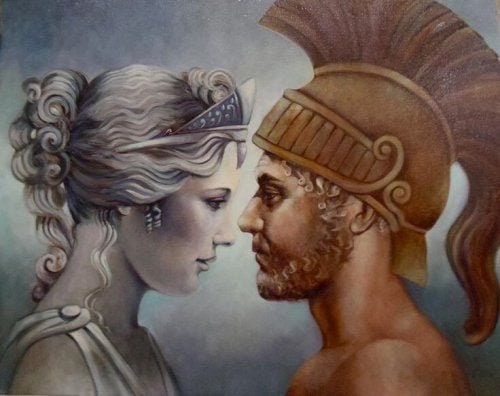
In addition to her association with Ares, Eos was known for daily bringing light to the world. According to myth, Eos would ride her chariot across the sky each morning, bringing the sun and chasing away the darkness.
Eos and Ares’s complex relationship is filled with love and conflict. While Eos was devoted to Ares, their union also represented how love and war can be intertwined and how beauty and destruction coexist.
List of Interesting Facts
- EOS is the Greek goddess of the dawn, who opens the gates of heaven for the sun to rise.
- She is the daughter of the Titans Hyperion and Theia and sister of Helios (the sun) and Selene (the moon).
- EOS is often depicted as a beautiful woman with rosy fingers, wearing a saffron-colored robe and a tiara of golden rays.
- She is associated with new beginnings, renewal, and hope and is known to bring light to the world after the darkness of night.
- According to Greek mythology, EOS fell in love with the mortal Tithonus and asked Zeus to grant him immortality. However, she forgot to ask for eternal youth, and Tithonus eventually grew old and frail, becoming a cricket.
- Eos is also known for her romantic affairs with gods and mortals, including Ares, Orion, and Cephalus.
- In art, Eos is often depicted riding a chariot pulled by winged horses or with a torch in one hand and a wreath in the other.
- The ancient Greeks believed that Eos was responsible for the morning dew, which was seen as a symbol of her tears for her lost love, Tithonus.
- In some versions of the myth, Eos is also associated with the planet Venus, also known as the Morning Star.
- Eos was an essential figure in Greek mythology and was worshipped in various parts of Greece, including Athens, Sparta, and Thebes.
Frequently Asked Questions
What is the origin of Eos?
Eos is a Greek goddess of the dawn, also known as Aurora in Roman mythology. She is the daughter of Hyperion and Theia and the sister of Helios (the sun god) and Selene (the moon goddess). Eos is one of the twelve Titans, the divine beings who ruled the world before the Olympian gods.
What are the powers of Eos?
Eos is known for her ability to bring forth the dawn, signaling the start of a new day. She is also associated with the morning breeze and the sun’s gentle light. Eos is said to have the power to grant youth, beauty, and vitality to mortals who seek her favor.
What symbols are associated with Eos?
Eos is often depicted as a beautiful woman with rosy fingers and golden wings, holding a torch or a rose. She is sometimes shown riding a chariot drawn by winged horses or driving a golden chariot across the sky.
What is the personality of Eos?
Eos is described as a kind and gentle goddess, bringing light and hope to the world. She is also known for her passionate nature and her love for mortals. Eos is said to have fallen in love with several handsome young men, including Tithonus and Cephalus.
What is the story of Eos?
One of the most famous stories about Eos is the tale of her love for Tithonus, a mortal prince. Eos asked Zeus to grant Tithonus eternal life, but she also forgot to ask for eternal youth. As a result, Tithonus grew old and frail, unable to die and enjoy life. Eos eventually turned him into a grasshopper so he could continue to sing and be heard.
What is Eos known for?
Eos is known for her role as the goddess of the dawn, bringing light and hope to the world. She is also associated with youth, beauty, and vitality and is said to have the power to grant these qualities to mortals who seek her favor.

